Writing an effective cold email is one of the most difficult things to do in marketing. For one thing, you have no relationship with your audience. Now that’s some roadblock!
Second, you can’t fine-tune your approach in real-time; there’s no way you can tell what works and what doesn’t for want of any feedback.
However, in spite of the inherent limitations of cold emailing, you can make it work. To that end, we will learn how to implement AIDA email marketing. You don’t need to rely on custom templates for writing cold emails, as you would in the case of managed email campaigns. An effective cold email is chiefly about structure and tone.
But first things first. Let’s take a close squint at the AIDA framework.
Understanding The AIDA Framework for Email Marketing
First and foremost, it is important to understand that “AIDA” is not a formula, as many tend to think, but a framework. What’s the difference?
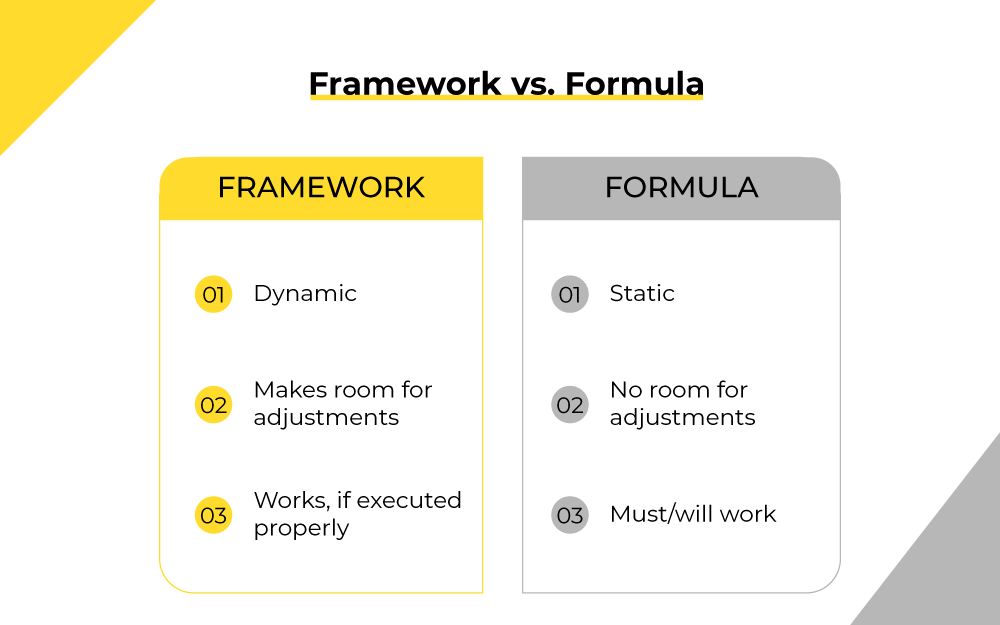
A framework is a dynamic system of rules that shows you the direction in which you ought to move. Significantly, a framework makes room for adjustments where needed.
A formula, on the other hand, is a static principle that assumes success at all levels of a process. So it does not make room for adjustments.
In relation to AIDA, this means implementing the framework is a step toward making cold emails work, not a guarantee that it will work.
That being said, using the AIDA framework is putting your best foot forward as an email marketer. So, let’s break up the components of the framework as follows:
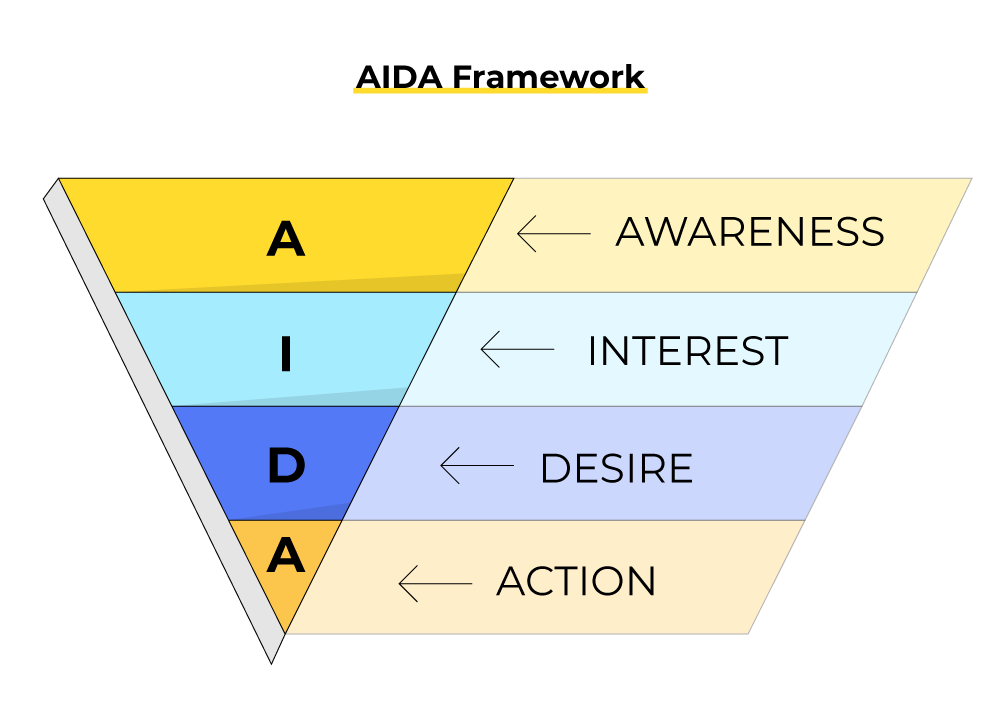
- Awareness: You make your audience aware of what it is you are trying to solve.
- Interest: You build interest in your product/service by offering value to your audience.
- Desire: You make your audience realize why exactly they need your service.
- Action: You enable the aware, interested, desiring recipient to buy your product/service.
Creating awareness, sparking interest, stoking desire – these don’t happen in a vacuum. As a marketer, your job is not to make people feel that they need your service. Instead, you want them to realize why your service is best positioned to solve their problem.
This is why the first stage of the AIDA model is so crucial. You are not trying to make your audience aware of what they need; they already know it.
What they don’t know is how your business, and no one else’s, can answer their needs. Having made that clear, let’s now explore the stages of the AIDA model. Our focus will be on sending cold emails to one specific person, not a target segment.
[The classical variant of the AIDA model replaces “awareness” with “attention.” Both mean the same thing as they both act as a stimulus, which is the first step in advertising.]
Awareness: Highlighting The Pain Point And Providing Relief
In behavioral economics, there is something called loss aversion, a phenomenon in which the effect of loss on our mind far outweighs the effect of equivalent gain.
The burden of incurring loss is too much for us. We are more averse to losing than we are attracted to winning.
So, if you know the pain point (which is potentially a loss) of your audience, and if you can offer the right solution, highlight it in your email. In addition, as a prelude to the next stage, you can add social proof in your email to buttress your offer.
The following is a cold email template for the Awareness stage.
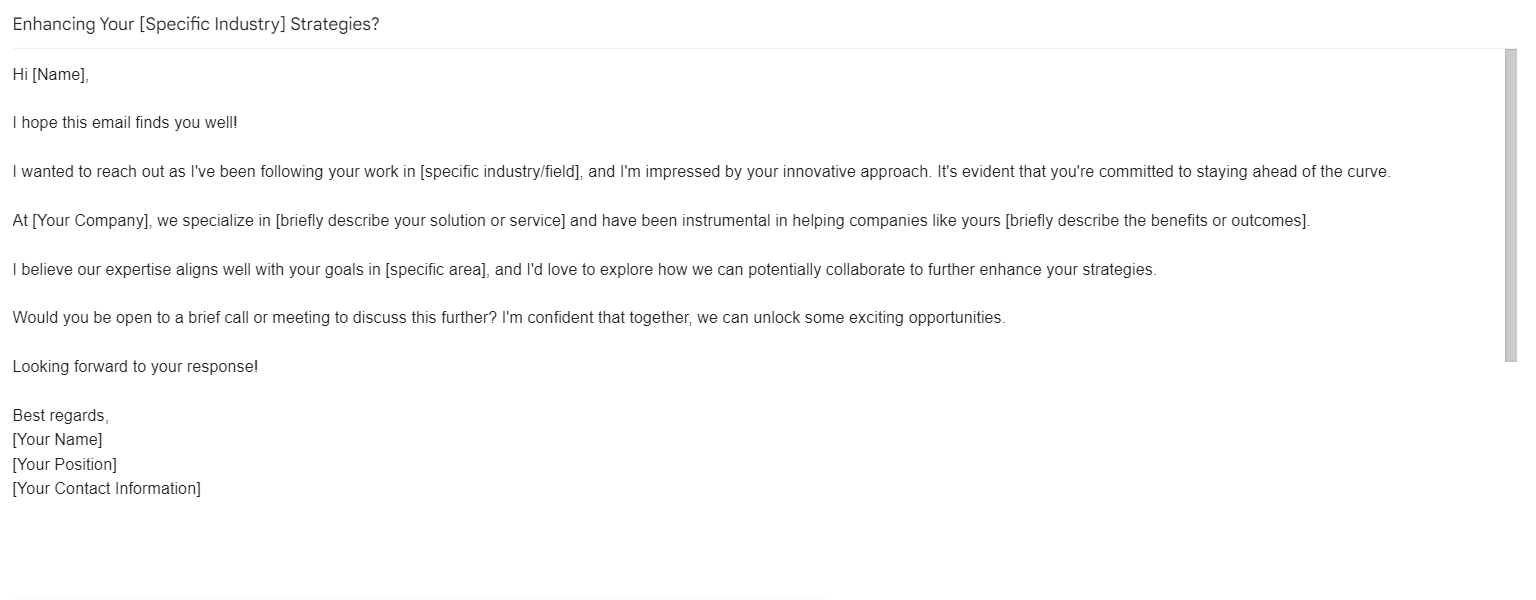
Interest: Providing A Microscopic View of Your Product/Service
Now that the target recipient is aware of your offering, you need to spark interest in your product/service. You do that by explaining how it achieves what it achieves.
Provide clear information about your solution, including features, benefits, and pricing plans. You might also want to add details of your company, owners, etc.
If you have already used social proof for the Awareness stage, feel free to expand upon it in the Interest stage. You can refer to customer testimonials and blog posts as well.
Feel free to use the following template at the Interest Stage.
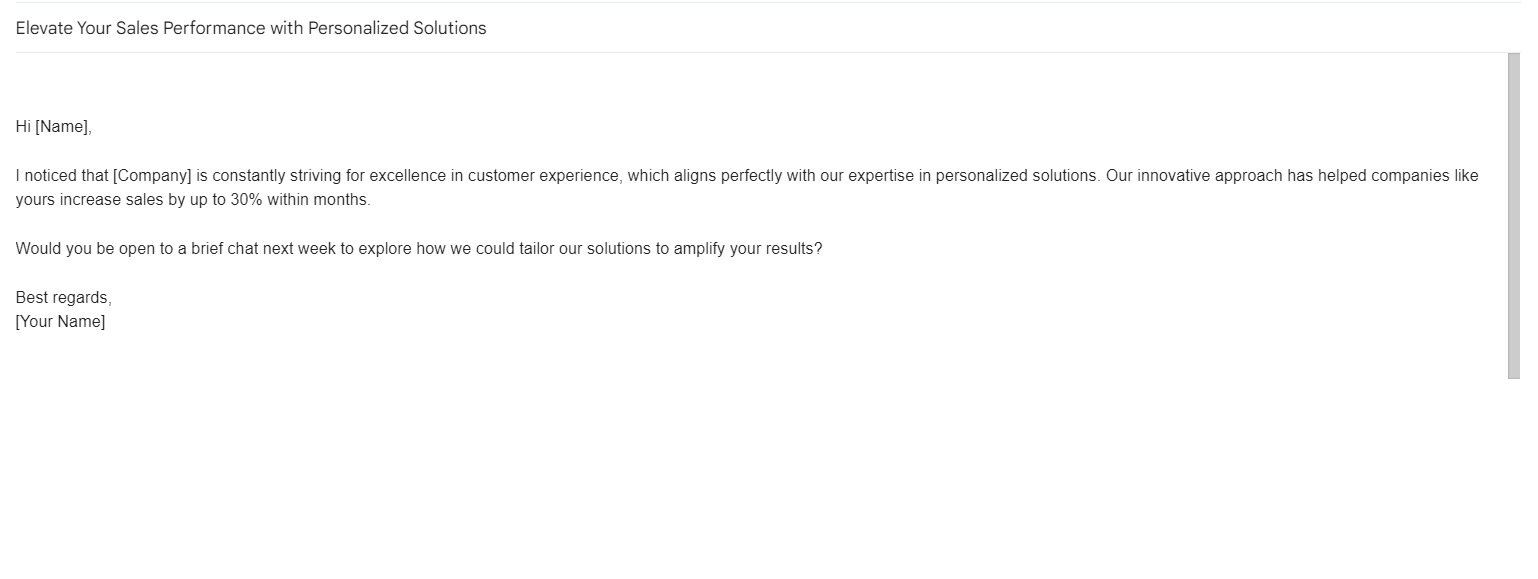
Desire: Implying Why The Recipient Needs Your Service
List the obvious benefits of availing your service or product. “Implying” means you don’t want to appear aggressive in making the recipient realize the potential of your offering.
Again, you can make use of more social proof to highlight the value of your product. Because you are cold emailing one person, emphasize the value you can offer in a highly niche-specific context.
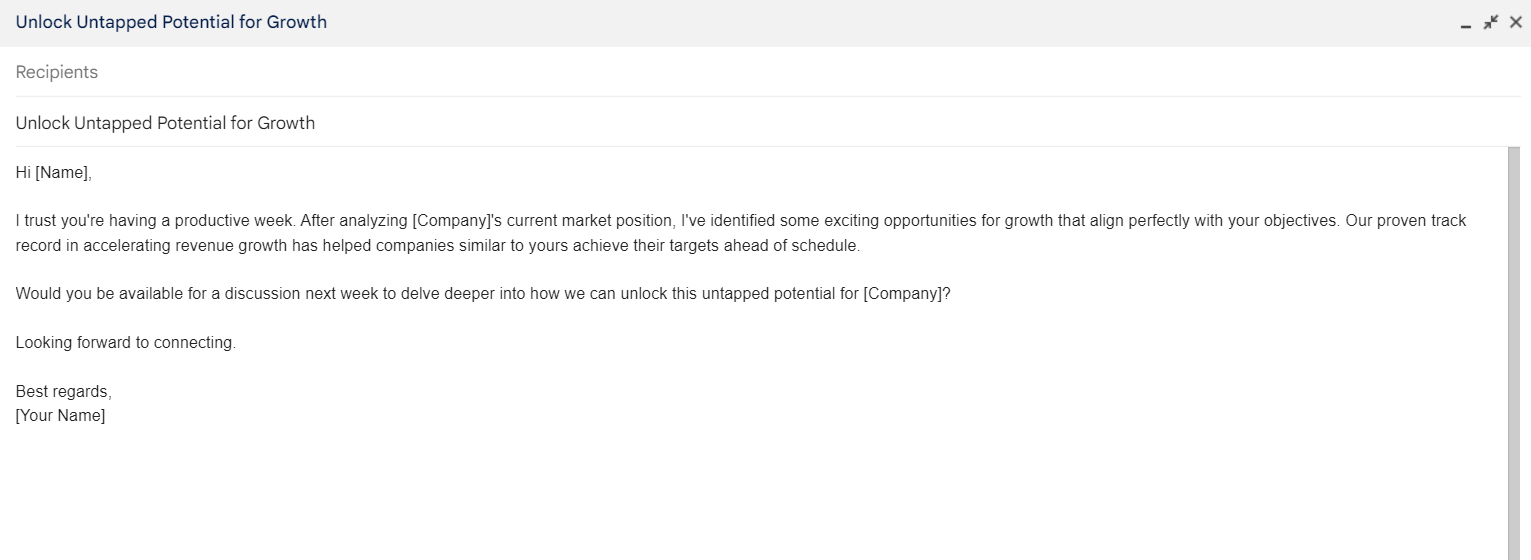
Action: Making It Simple And Easy for The Lead to Convert
The recipient is now convinced. Let them know what they need to do next.
Oddly enough, email marketers often take the last stage for granted. Yes, the recipient is convinced. But they can’t and won’t act unless you tell them how to act. Convincing is not the ultimate aim; converting a lead into a paying customer – that’s what you are aiming for.
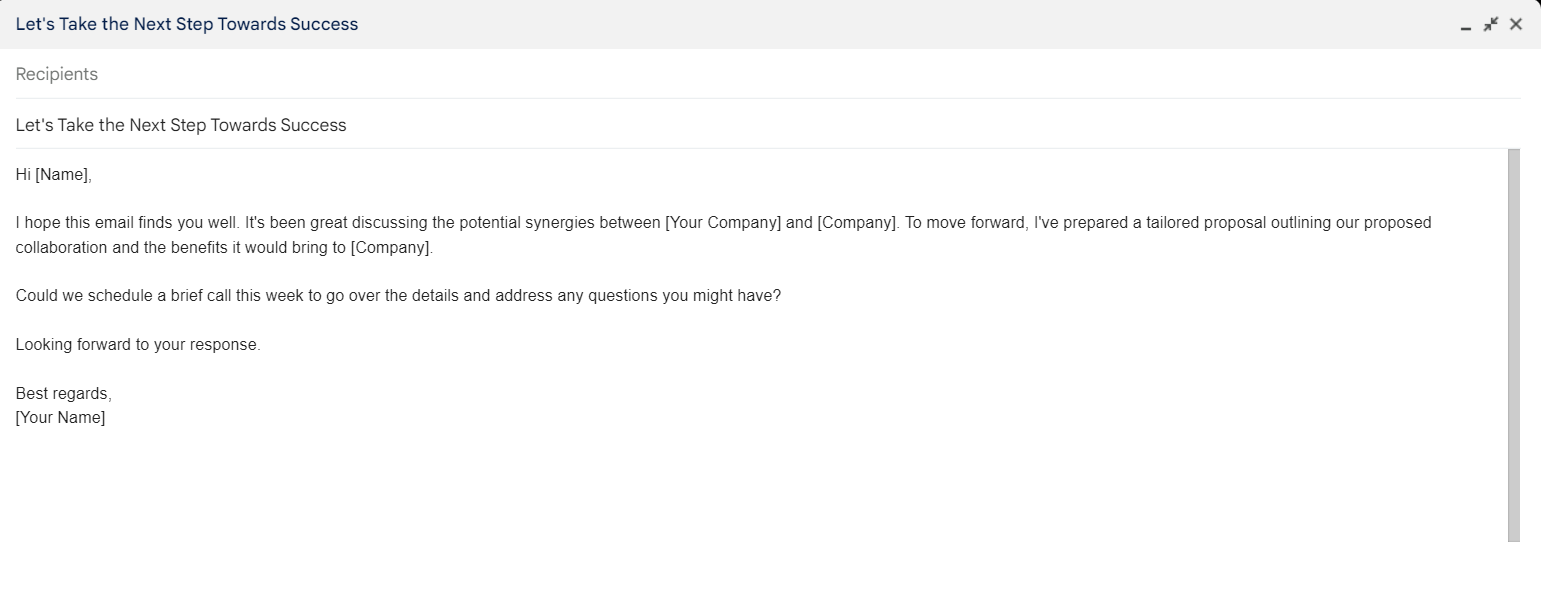
Cold Emailing: A Continuum
It is important to understand that cold emails function across a continuum. In other words, the stages of the AIDA framework may overlap with each other. They usually do. The point of presenting it in a linear fashion here is just so you can get the idea.
In fact, you could implement all the stages in one email as well. Consider the following AIDA model email example. The email incorporates all the stages of the framework.
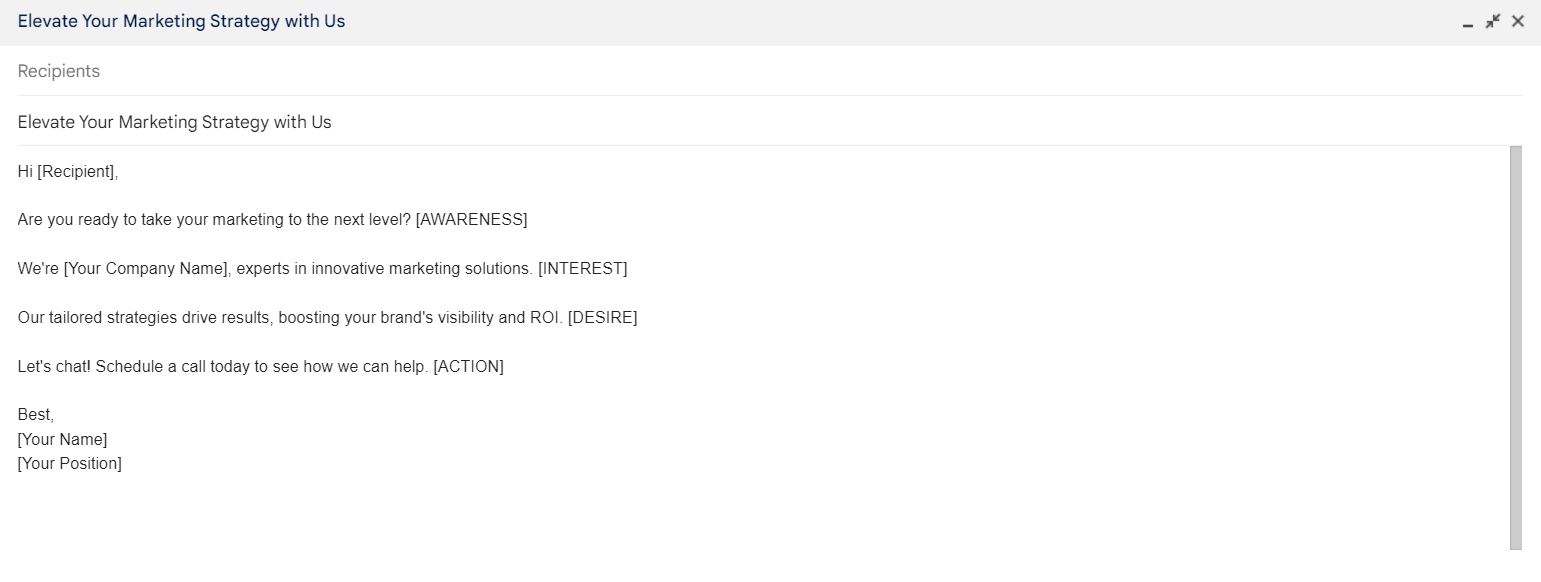
Cold Email General Best Practices
1. Personalization for Real
This should be intuitive. You are reaching out to someone because you know who the person is, what their preferences are, what interests them, and what they might be struggling with. That’s where you offer your solution, tailored to the recipient’s needs.
You also want to make it clear why you are reaching them and not someone else. Tell them how they uniquely fit into the narrative you are pushing.
2. Rational Self-Validation
You began the conversation with the recipient in focus; now turn the spotlight on yourself. (The order is very important.)
You don’t want to appear aggressive. But you don’t want to seem too self-effacing, either. Bear in mind that you are reaching out to a stranger. You must enlighten them as to why they may be interested in you. Use a line or two to highlight something relevant to their niche.
3. Short, Simple, Actionable
Don’t ramble. Keep it short, easy to follow, and actionable. The reader should be able to capture the relevant information at a glance or two.
One of the ways you can shorten your email is to write how you’d talk. As you feel spontaneous, you won’t need to rely on verbiage.
The way you make it actionable is to minimize the cognitive weight on the reader’s mind. You can do this by being highly specific.
For instance, if you want to schedule a call, provide a functional link and mention the date and time of your availability. Don’t leave the prospect guessing, which may lead to another unnecessary email or two in the thread (“Could you send me the details?” etc.)
Finally, a good rule of thumb is to read your email aloud before sending it.
4. Controlled Acquiescence
You don’t want to appear to be groveling to the recipient. But being a little submissive in your approach might help. By entitling the other person to help, you are ennobling them.
This motivates the recipient to act. They feel appreciated and are potentially more willing to hear you out. Catch the right tone, and it can do wonders for you.

Wrapping Up!
The AIDA framework gives you a strong head start on writing an effective cold email. It gives a reliable structure to your email, sharpens your focus as to what your immediate goal is, and acts as a suitable restraint on your writing.
Feel we missed anything? Let us know in the comments!


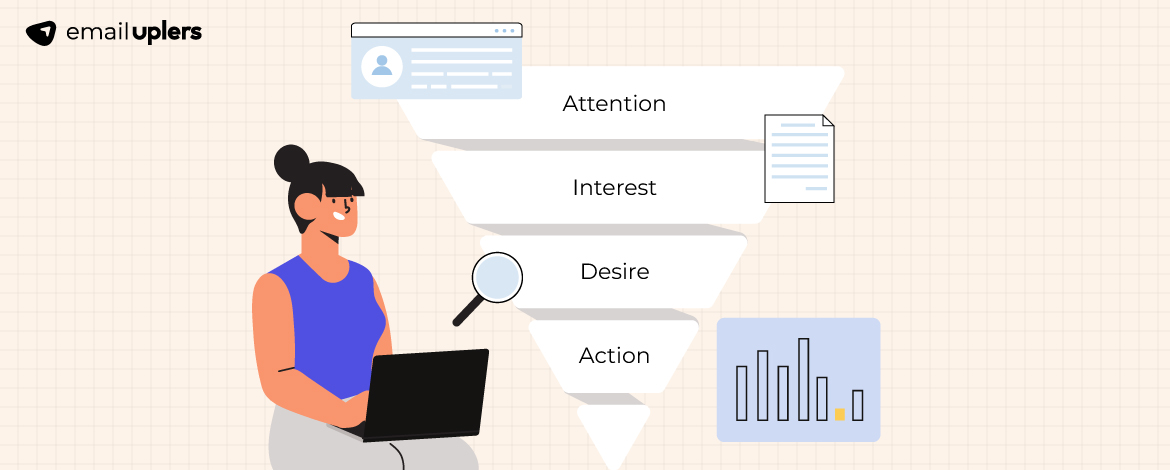

Susmit Panda
Latest posts by Susmit Panda (see all)
5 April Fools’ Day Inspirations to Help You Build A Smart Email Campaign
15 Platform-Wide Updates in Salesforce Spring ‘24 Release